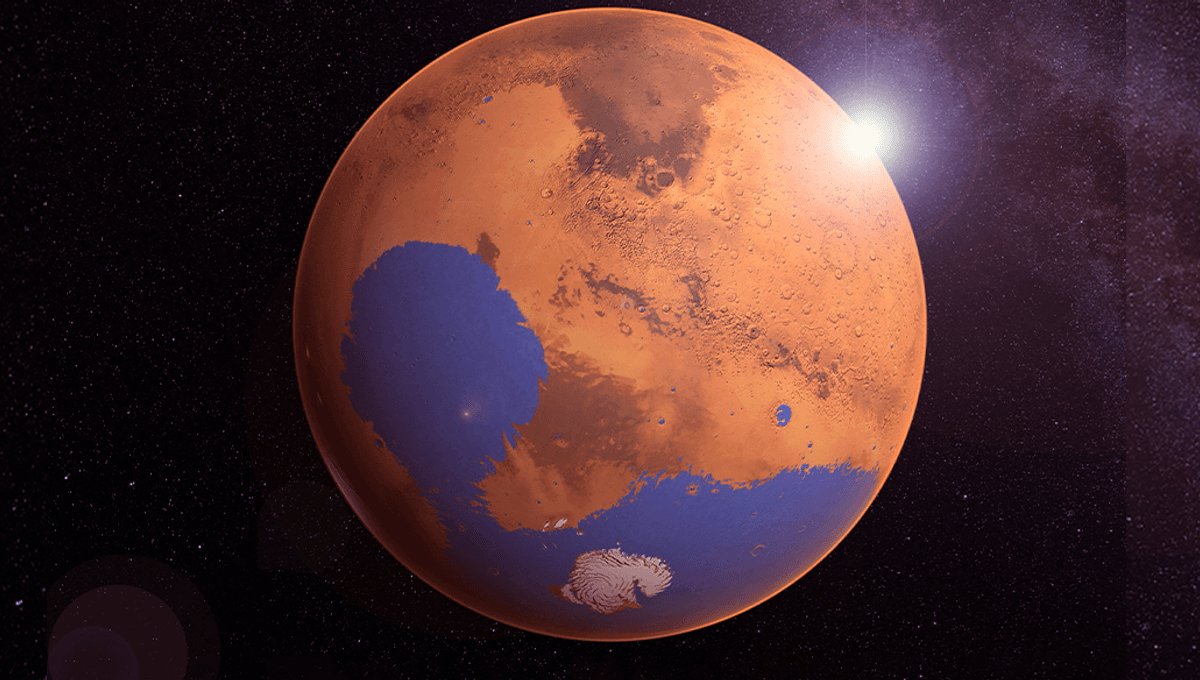A potential pathway has been outlined for the formation of molecules crucial for life on Mars during its early history. While the actual occurrence of this process and its connection to the origin of life on the planet remain uncertain, the research suggests that those hopeful for the existence of life on our neighboring planet should maintain their optimism a little while longer.
The presence of liquid water is identified as a fundamental prerequisite for life to emerge, and historical evidence indicates that Mars sustained this condition for a significant period of at least 200 million years. Additionally, organic compounds serving as the fundamental building blocks for RNA or similar molecules are deemed indispensable. Some of these compounds have been identified in meteorites that have impacted Mars more frequently than Earth. However, the extent to which these extraterrestrial sources could have provided all the necessary components, or if Mars itself could have contributed to their formation, remains uncertain.
Recent research by Shungo Koyama and his team from Tohoku University sheds light on the role of formaldehyde in this context. While commonly recognized as a chemical used in various industrial processes, formaldehyde (H2CO) is a crucial precursor molecule produced in large quantities annually. The study suggests that formaldehyde could have been generated from carbon dioxide and water vapor through a series of intermediate reactions.
Formaldehyde, being both soluble in water and chemically reactive, could have undergone reactions with ammonia and other simple molecules in the ancient Martian ocean, resulting in the formation of amino acids, sugars, and other biologically significant compounds. Notably, ribose, a key component in RNA synthesis, could have been produced through these processes.
The ability of formaldehyde to catalyze the formation of complex molecules under aqueous conditions is well-established, particularly through the formose reaction. What sets this research apart is the indication of formaldehyde’s potential abundance in the Martian atmosphere during that era.
The researchers suggest that the ancient Martian atmosphere likely contained high levels of carbon dioxide, hydrogen, and carbon monoxide. The presence of atmospheric hydrogen is inferred from the planet’s historical temperature relative to solar radiation levels, while carbon monoxide and carbon dioxide are believed to have originated from volcanic activities. Taking into account the influence of sunlight, the team predicts that such atmospheric conditions would have facilitated formaldehyde production, with subsequent deposition into the Martian ocean.
This process would have been further influenced by evaporation of the ocean water, leading to concentration of other molecules in the remaining liquid, thereby enhancing the chances of crucial bioactive chemicals interacting and forming complex structures.
Koyama emphasized the significance of this research in understanding the chemical dynamics of ancient Mars and its implications for the potential existence of past life on the planet. The actual quantities of formaldehyde produced would have depended on the atmospheric gas ratios, with indications pointing to substantial levels at certain periods.
While the theoretical framework is compelling, the primary focus now shifts towards validating these hypotheses. Leveraging decades of data from Martian missions and rover explorations, the research team plans to analyze isotopic compositions of carbon within preserved organic molecules. These isotopic signatures could provide valuable insights into whether these molecules indeed originated from atmospheric processes like those proposed, as opposed to alternative non-atmospheric sources.
